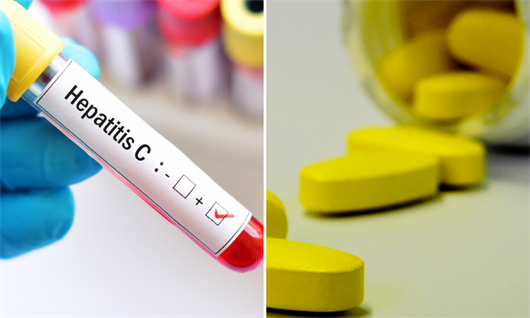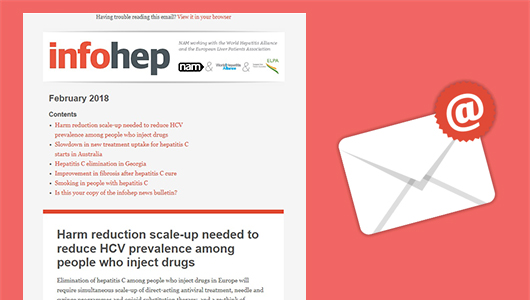Having trouble reading this email? View it in your browser
| |
April 2022 | |
Severe acute hepatitis of unknown origin in childrenCases of severe acute hepatitis in children are being reported in an increasing number of countries and the cause is unknown, the World Health Organization (WHO) said on Saturday. A total of 169 cases of acute severe hepatitis in children had been reported in eleven countries by 21 April. The children affected range in age from one month to 16 years old. So far, one death and 17 liver transplants have been reported as a result of the hepatitis outbreak, WHO revealed on Saturday. Most cases have been reported in the United Kingdom (114), where the condition was first identified. The syndrome presents in the form of acute hepatitis with elevated liver enzymes. In many cases gastrointestinal symptoms such as abdominal pain, diarrhoea and vomiting have preceded the development of severe hepatitis. AST and/or ALT levels above 500 IU/ml have been accompanied by jaundice. Fever is absent in the majority of cases. Viral hepatitis has not been detected in any of the cases and all the children presenting with the syndrome were described as previously healthy. WHO says that “other infectious and non-infectious explanations need to be excluded to fully assess and manage the risk.” Several working hypotheses are being investigated, including the possibility that a lack of prior adenovirus exposure due to the COVID-19 lockdowns may have left children more susceptible to the effects of resurgent adenovirus infections. The UK has observed an increase in adenovirus infections in the community in recent months. Another possibility is that prior SARS-CoV-2 infection or another viral infection could result in a severe reaction to infection by another virus. A novel pathogen cannot be ruled out. Alternatively, the syndrome may have a non-infectious cause, either a drug, toxin or environmental exposure. The vast majority of affected children were not vaccinated against SARS-CoV-2. Therefore, hypotheses linking the events to side effects of COVID-19 vaccines are not supported. The UK Health Security Agency (UKHSA) has issued a technical briefing on cases reported to date in England. The agency has also issued guidance to clinicians on reporting of cases and standardisation of testing to assist investigation into the causes of the syndrome. Sofosbuvir/velpatasvir is suitable for treatment of genotype 4 variants in AfricaSofosbuvir/velpatasvir is safe and effective for the treatment of hepatitis C genotype 4 variants that have naturally occurring resistance to some direct-acting antivirals in the NS5A inhibitor class, a study in Rwanda has shown. Numerous subtypes of genotype 4 have been identified in sub-Saharan Africa. Some of these subtypes contain naturally occurring mutations in the NS5A region that confer resistance to the NS5A inhibitors ledipasvir and daclatasvir. Several studies have shown high rates of treatment failure when sofosbuvir/ledipasvir (Harvoni) or sofosbuvir/daclatasvir were used to treat people with genotype 4r, one of the genotype 4 variants. Sofosbuvir/velpatasvir (Epclusa) is active against genotypes 1-6 but it has been unclear if the activity of the NS5A inhibitor velpatasvir is compromised in non-a, non-d genotype 4 subtypes, as clinical trials included few African participants with non-a, non-d genotype 4 subtypes. The SHARED-3 study investigated whether sofosbuvir/velpatasvir is an effective regimen in people with hepatitis C genotype 4 in Rwanda. Participants received a 12-week course of treatment with sofosbuvir/velpatasvir. Twelve weeks after the completion of treatment, 59 of 61 participants had a sustained virological response. A further study in the SHARED-3 research programme looked at the effectiveness of sofosbuvir/velpatasvir/voxilaprevir in 40 people who had experienced the failure of sofosbuvir/ledipasvir or another regimen as first-line treatment in Rwanda. All but one participant had a sustained virological response. The study investigators say that further work is needed to make affordable generic versions of these drug combinations available. Also, more research is needed to develop robust investment cases for use in specific regions based on local epidemiology and prevalence of resistance, in order to ensure that countries with a higher prevalence of harder-to-treat HCV subtypes do not fall behind in their HCV elimination efforts, as well as to assess the prevalence of genotype 4 variants in sub-Saharan Africa. Related linksUK report urges re-think on hepatitis C reinfection
Needle exchange/naloxone supply in Birmingham. Nigel Brunsdon/nigelbrunsdon.com Progress towards the elimination of hepatitis C is being undermined by a lack of attention to the harm reduction needs of people cured of hepatitis C in the United Kingdom, as well as a lack of testing and surveillance for reinfection, a report by the Hepatitis C Trust and HCV Action concludes. The report recommends that more attention needs to be paid to detecting reinfection in order to achieve hepatitis C elimination targets, as well as improving prevention measures for those who have completed a course of treatment. Reframing reinfection: towards sustainable hepatitis C elimination in the UK was published by the Hepatitis C Trust, the national peer support organisation for people with hepatitis C, and HCV Action, the voice of the hepatitis C professional community. The report highlights the patchy evidence regarding reinfection rates. Although the national Health Security Agency has estimated that almost 11% of people who use drugs in England may have been reinfected after being cured of hepatitis C, the true extent of reinfection is unclear. Some areas have observed rates as high as 19% within two years of cure, the report authors learned. Several professionals interviewed for the report stressed that detecting reinfection is a sign that resources are being used effectively to screen people at higher risk of hepatitis C infection and re-engage them in care. As well as a greater focus on the provision of harm reduction services, the report emphasises the need to make more of the opportunity that hepatitis C treatment brings for addressing other needs of people with hepatitis C, such as housing and mental health, during and after the completion of treatment. The six-month pre-treatment and treatment period is an important opportunity to educate people about reinfection risks and harm reduction measures and ensure that they have the support in place to minimise the risk of reinfection after completing treatment. Ensuring that regular testing is offered after treatment for people at ongoing risk of reinfection will be critical, the report notes. Related linksHigh hepatitis C reinfection rate in prison study highlights harm reduction needsHepatitis C reinfection rates were high in Australian prisoners who took part in a study of hepatitis C treatment in prisons, researchers from the University of New South Wales report in the journal Clinical Infectious Diseases. Lack of harm reduction measures, high rates of injecting equipment sharing, low coverage of opioid substitution treatment and lack of surveillance for reinfection all contribute to the high reinfection rate, the study investigators conclude. Eighteen out of 161 participants were reinfected during a median follow-up period of nine months, an incidence of 12.5 cases per 100 person-years of follow-up. In people who reported recent injecting drug use and needle and syringe sharing, the reinfection rate was 28.7 per 100 person-years. Achieving hepatitis C elimination in prison settings while minimising reinfection will require scale-up of harm reduction measures as well as surveillance for reinfection and rapid re-treatment, the study investigators conclude. Related linksTest-and-treat leads to sustained fall in hepatitis C in Swiss gay men with HIV
Jarun Otakrai-Shutterstock/Pexels Intensive screening for hepatitis C, treatment and risk reduction counselling have led to sustained declines in hepatitis C prevalence and new cases of hepatitis C among gay and bisexual men living with HIV in the Swiss HIV Cohort, researchers report in the journal Clinical Infectious Diseases. The findings provide compelling evidence that so-called ‘micro-elimination’ efforts to diagnose and cure hepatitis C in specific groups with a high prevalence of the virus not only eliminate chronic infections but also limit new infections – and that this effect is sustained over several years. Related linksIs this your copy of the infohep news bulletin?
Is this your copy of the infohep news bulletin, or did you receive it from a friend or colleague, or find it online? You can sign up to receive this monthly email bulletin, free of charge, on our website, where you can also find an archive of all the infohep news bulletins. | |
 Latest treatment news and information for patient advocates and people working in hepatitis in Europe. For more details, please contact: To unsubscribe please click here Privacy Policy |





Connect with infohep on Facebook: Keep up to date with all the latest news and developments.
Follow infohep on Twitter for links to news stories and updates from infohep.org. Follow us at www.twitter.com/infohep.
Follow all the infohep news by subscribing to our RSS feeds.